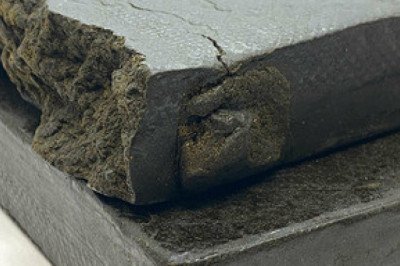views
Today Coreco presents an article about carbon fiber driveshafts. First of all, we have to introduce what is a driveshaft. As an important part on the car, the driveshaft needs to transfer power between two axes with different shafts, and the working environment is relatively harsh. Traditional driveshafts are made of metal, which are subject to rapid wear and tear, short life span, noise and loss of engine energy, and therefore require regular and continuous maintenance with lubricants. Compared with metal driveshafts, carbon fiber driveshafts have high specific strength and high specific modulus, which not only help to realize the lightweight of the car, but also save fuel consumption, and are stronger than traditional metal materials. The application of carbon fiber composites in driveshafts can make significant improvements to the disadvantages produced by driveshafts in automobiles.
The birth of car carbon fiber driveshaft
The earliest carbon fiber driveshafts for automobiles were created by Morrison in the United States for use in General Motors' heavy-duty vehicles. This application allowed the original two pieces to be combined into one, reducing the material mass by 60% and each driveshaft by 9 kg. The driveshaft is made of industrial-grade 48K carbon fiber from Zoltech, consuming an average of 0.68 kg of carbon fiber per carbon fiber driveshaft.
Carbon fiber driveshaft advantages
1. High strength
The carbon fiber used in carbon fiber drive shaft is made of polypropylene fiber, which is processed into very fine fiber filaments through high temperature carbonization and other special processes to improve the single filament strength and increase the surface area of a certain amount of fiber. It has high strength, high modulus, high temperature resistance, wear resistance, corrosion resistance, fatigue resistance and many other excellent properties. The strength of general-purpose carbon fiber is 3500MPa, much higher than the strength of steel at 340MPa.
2. Lightweight
The density of carbon fiber material is 1.8g/cm2, and the density of steel is 7.8g/cm2. Information shows that the carbon fiber drive shaft can reduce the weight by at least 40% compared with the traditional metal drive shaft, which includes the metal connecting parts at both ends of the drive shaft. For every 1% reduction in the mass of common parts of a car, fuel consumption can be saved by 1%, and moving parts such as drive shafts can save up to 2%.
3. High critical speed
The critical speed is a very important parameter in the performance of the automotive drive shaft. If the speed of the drive shaft is the same as its bending vibration state frequency, the drive shaft will resonate and risk breaking. Carbon fiber driveshafts have excellent mechanical properties and displacement compensation capability, and a single driveshaft tube can meet the requirements of use. The study shows that the critical speed of automotive drive shaft is 8000rev/min under the same diameter of shaft body, and the length of traditional metal drive shaft is 1250mm, while the length of carbon fiber drive shaft is up to 1650mm.
Carbon fiber driveshaft laying principles
1. Principle of directional lay-up
In practice, try to reduce the lay-up angle of composite materials, generally the more applied lay-up angle is 0°, 90° and ±45°.
2. Laying sequence principle
In order to reduce the delamination and cracking of the two paving layers, in general, try to avoid the corresponding paving angle continuous paving, if you must continuously lay the agreed paving angle, the number of layers required to lay less than 5 layers; due to ± 45 ° paving angle has good impact resistance and compression resistance characteristics, play a maintenance role, so the laminate surface layer is best to choose ± 45 ° paving angle.
3. The principle of balanced symmetry of pavement
Non-equilibrium symmetrical lay-up of composite materials cured into will occur coupling deformation, and symmetrical lay-up of composite materials can effectively avoid this phenomenon. Therefore, the pavement should be balanced and symmetrical as much as possible.
4. Principle of pavement thickness design
The sudden change of pavement thickness will lead to stress concentration, and the number of pavement layers should be changed incrementally when using variable thickness pavement. The difference between the number of layers of each pavement should be equal, and its width should be greater than 2.5 mm. in order to avoid layered aging at the step, requiring the use of a continuous layer of equal thickness of the surface layer of the member.
5. According to the load direction to determine the principle of laying direction
The principle of determining the laying direction according to the load direction is followed when laying layers. When the structure is subjected to unidirectional tension or compression, the fiber direction is laid in accordance with the load direction; when subjected to bi-directional tension or compression, the laying direction is orthogonal to the load direction 0° and 90°; when the carbon fiber composite material is subjected to shear load, the laying angle is paired according to -45° and 45° laying; when the composite structure is subjected to composite load, such as compression and shear composite, tension and shear When the composite structure is subjected to composite load, such as compression and shear composite, tension and shear composite, the lay-up direction is multi-directional according to 0°, 90° and ±45°.
6. Impact load area design principles
For drive shafts subjected to impact loads, a large number of fibers are required to be laid in the area subjected to impact. Since the 0° lay-up angle plays a role in resisting local impact and the ±45° lay-up angle can spread the load, sufficient 0° and ±45° lay-up angles are required in the area subjected to impact loads. If the carbon fiber composite structure is subjected to frequent impact loads, the fibers should be laid evenly in all directions on the surface of the structure, and the difference in laydown angles between adjacent layers should be small.











